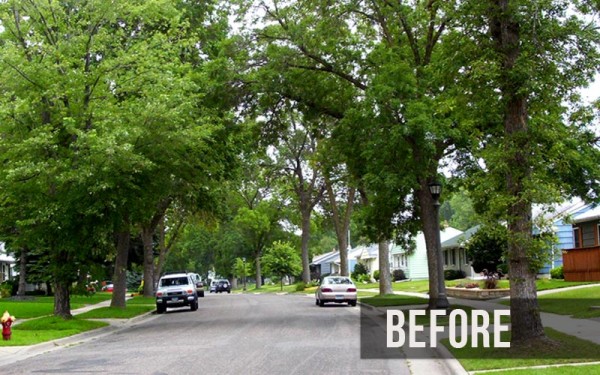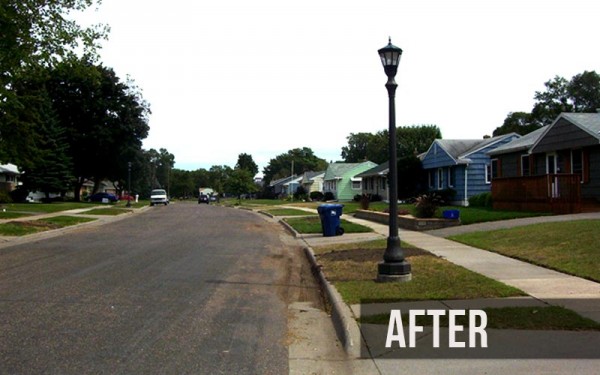Link in Tree & Human Health – Ventura, Santa Barabara, Camarillo, and Thousand Oaks Landscaping
In 2002, scientists discovered the emerald ash borer; a beetle that would be responsible for the death of over 100 million trees and counting in the eastern and midwestern United States. The borer attacks all 22 species of North American ash and kills virtually all of the trees it infests. The magnitude of devastation was unprecedented. Check out the pictures below to really get a sense of the impact this has had on entire communities. The US Forest Service, however, saw this catastrophic loss as an opportunity to study the impact of a major natural environment change on human health.
Researchers analyzed 18 years of data from 1,296 counties in 15 states that were affected by the borer. They found that those people suffered from an additional 15,000 deaths from cardiovascular disease and 6,000 more deaths from lower respiratory disease when compared to uninfected areas. The researchers analyzed demographic, human mortality, and forest health data at the county level between 1990 and 2007. The data came from counties in states with at least one confirmed case of the emerald ash borer in 2010. The findings, which hold true after accounting for the influence of demographic differences, like income, race, and education, are published in the American Journal of Preventive Medicine.
“There’s a natural tendency to see our findings and conclude that, surely, the higher mortality rates are because of some confounding variable, like income or education, and not the loss of trees,” said Geoffrey Donovan, head researcher for the study. “But we saw the same pattern repeated over and over in counties with very different demographic makeups.”
Although the study shows the association between loss of trees and human mortality from cardiovascular and lower respiratory disease, it did not prove a causal link. The reason for the association is yet to be determined. In the mean time, it is worthy to note that the connection does exist between trees and human health so tree huggers rejoice and keep planting those trees.
The study was conducted in collaboration with David Butry, with the National Institute of Standards and Technology; Yvonne Michael, with Drexel University; and Jeffrey Prestemon, Andrew Liebhold, Demetrios Gatziolis, and Megan Mao, with the US Forest Service’s Southern, Northern, and Pacific Northwest Research Stations. For more information , please visit Science Daily




